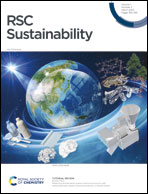Perspectives in growth production trade-off in microbial bioproduction
Abstract
Metabolic engineering of microbial systems and conversion routes can provide robust platforms for the production of bulk commodities for food, materials and fuel targets. For products in this range, the maximum conversion of starting materials and stable phenotypes in a bioreactor are vital for an economically viable process. Strain engineering approaches to improve the conversion efficiency and reduce the phenotypic variability have witnessed significant development in the past decade. Herein, we review several of the main categories of these approaches including growth coupling, growth decoupling, regulatory control and use of non-metabolic cellular functions. We discuss these topics in the context of microbial host physiology and its impact in the selection of the most effective approach. We also discuss the importance of growth medium optimization and studies using bioreactors in delineating a bioproduction system that is most likely to provide stable conversion over a longer period.

- This article is part of the themed collection: Celebrating the 70th Birthday and Achievements of David Lynn


 Please wait while we load your content...
Please wait while we load your content...